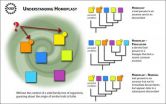(Press-News.org) SEATTLE – Full-term pregnancy has long been associated with a reduced risk of breast cancer, but a new study finds that the more times a woman gives birth, the higher her risk of "triple-negative" breast cancer, a relatively uncommon but particularly aggressive subtype of the disease. Conversely, women who never give birth have a 40 percent lower risk of such breast cancer, which has a poorer prognosis than other types of breast cancer and doesn't respond to hormone-blocking therapies such as tamoxifen.
These findings, from a study led by Amanda Phipps, Ph.D., a postdoctoral research associate in the Public Health Sciences Division of Fred Hutchinson Cancer Research Center, are published online ahead of the March 16 issue of the Journal of the National Cancer Institute.
"Unlike most breast cancers, triple-negative tumors don't depend on hormonal exposures to grow and spread, so our assumption going into the study was that reproductive factors would not be associated with a woman's risk of this cancer subtype," Phipps said. "We were surprised by these findings because researchers have known for quite some time that women who have children, especially those who have them at an early age and have multiple full-term pregnancies, have a lower risk of breast cancer overall."
While never giving birth appears to be protective against triple-negative breast cancer, the researchers found that women who remain childless have about a 40 percent higher risk of estrogen-receptor-positive breast cancer – the most common form of the disease, which can be treated with estrogen-blocking drugs – as compared to those who have one or more offspring. This higher risk of estrogen-receptor-positive breast cancer among women who have not had children is well established, and it is thought to be related to the fact that such women do not undergo pregnancy-related changes in the breast that confer a lifelong protective effect.
"The mechanisms by which full-term pregnancy contributes to an increased risk of triple-negative breast cancer and a decreased risk of other forms of the disease are not clear," Phipps said. "We do know that the hormones of pregnancy induce certain changes in the cellular structure of the breast. Overall, those changes seem to make the breast less susceptible to cancer. It is possible, however, that the increased risk of triple-negative breast cancer we found in women who had given birth may be due to some abnormal response of their breast tissue to the hormones of pregnancy. Another possibility is that pregnancy somehow makes the breast more susceptible to certain carcinogens even while reducing breast cancer risk overall," she said.
For the study, which was based on data from the Women's Health Initiative, Phipps and colleagues analyzed the detailed reproductive histories of some 150,000 postmenopausal women, more than 300 of whom went on to develop triple-negative breast cancer. "This particular study is significant because it is one of the largest studies ever conducted on the impact of reproductive history on triple-negative breast cancer," Phipps said.
Triple-negative breast cancer, which refers to any breast cancer that does not express the genes for estrogen receptor (ER), progesterone receptor (PR) or Her2/neu, accounts for only 10 percent to 20 percent of all breast cancers, and only in the past decade have researchers become aware that this cancer subtype exists. "This research reinforces the notion that breast cancer is not just one disease," Phipps said.
"The mechanisms that lead to triple-negative breast cancer are likely different from those that lead to other forms of the disease. We still have a lot to learn about what causes this more aggressive form of breast cancer, but we hope that research like this will help us develop better tools to identify those women at greatest risk."
It is known that this cancer subtype is more predominant in African American women and it tends to be diagnosed at an earlier age. Researchers also know there is a strong link between genetic mutations in the so-called "breast cancer gene," BRCA1, and triple-negative breast cancer.
"More research is needed to better understand the causes of the most aggressive and lethal forms of breast cancer. While this study adds to our knowledge base, it should not change women's approaches to breast cancer screening," Phipps said.
INFORMATION:
The National Heart, Lung and Blood Institute of the National Institutes of Health funded the study, which also involved researchers from Albert Einstein College of Medicine, Georgetown University, Harbor-UCLA Medical Center, Stanford University, State University of New York at Stony Brook, the University of Buffalo, the University of Pittsburgh and Wake Forest University.
At Fred Hutchinson Cancer Research Center, our interdisciplinary teams of world-renowned scientists and humanitarians work together to prevent, diagnose and treat cancer, HIV/AIDS and other diseases. Our researchers, including three Nobel laureates, bring a relentless pursuit and passion for health, knowledge and hope to their work and to the world. www.fhcrc.org
END
EAST LANSING, Mich. — There's more than one way to silence gene activity, according to a Michigan State University researcher.
Downregulating activity is how healthy genes should shift out of their development cycle. The results, published in this week's Current Biology, discuss how specific repressor proteins – which researchers have named Hairy and Knirps – slow genes during development and how the process is comparable to slowing down a car, says molecular biologist David Arnosti.
The binding of repressor proteins to DNA provides a molecular switch for such regulation. ...
As if the recent prediction that half of all Americans will have diabetes or pre-diabetes by the year 2020 isn't alarming enough, a new genetic discovery published online in the FASEB Journal (http://www.fasebj.org) provides a disturbing explanation as to why: we took an evolutionary "wrong turn." In the research report, scientists show that human evolution leading to the loss of function in a gene called "CMAH" may make humans more prone to obesity and diabetes than other mammals.
"Diabetes is estimated to affect over 25 million individuals in the U.S., and 285 million ...
How severe can climate change become in a warming world?
Worse than anything we've seen in written history, according to results of a study appearing this week in the journal Science.
An international team of scientists led by Curt Stager of Paul Smith's College, New York, has compiled four dozen paleoclimate records from sediment cores in Lake Tanganyika and other locations in Africa.
The records show that one of the most widespread and intense droughts of the last 50,000 years or more struck Africa and Southern Asia 17,000 to 16,000 years ago.
Between 18,000 and 15,000 ...
Cambridge, MA- Adding particles to liquids to make currents visible is a common practice in the study of fluid mechanics. The approach was adopted and perfected by artist Paul Matisse in sculptures he calls Kalliroscopes. Matisse's glass-enclosed liquid sculptures contain an object whose movement through the liquid creates whorls that can be seen only because elongated particles trailing the object align with the direction of the current; light reflects off the particles, making the current visible to the viewer.
Researchers at MIT recently demonstrated that this same ...
With the genetics of so many organisms that have different traits yet to study, and with the techniques for gathering full sets of genetic information from organisms rapidly evolving, the "forest" of evolution can be easily lost to the "trees" of each individual case and detail.
A review paper published this week in Science by David Wake, Marvalee Wake and Chelsea Specht, all currently National Science Foundation grantees, suggests that studying examples of homoplasy can help scientists analyze the overwhelming deluge of genetic data and information that is currently ...
Montreal, February 24, 2011 – The interventional cardiology team at the Montreal Heart Institute (MHI) recently began patient enrolment for a new device, the Neovasc ReducerTM, designed to treat patients suffering from refractory angina. The treatment method is a first in North America and is being conducted as part of an international study, the COSIRA trial. This innovative treatment is promising for thousands of Canadians disabled by refractory angina and who lack alternatives for relieving their symptoms and improving their quality of life.
Developed in Canada by ...
A strong link between victimization experiences and substance abuse has been discovered by researchers at the University of Illinois at Chicago.
The correlation is especially prevalent among gays, lesbians and bisexuals -- more so than in heterosexuals, says Tonda Hughes, professor and interim head of health systems science in the UIC College of Nursing. Hughes is lead author of the study, published in the journal Addiction.
Researchers compared victimization experiences of unwanted sexual activity, neglect, physical violence, and assault with a weapon, across four ...
ARLINGTON, Va. - One Sailor's request to replace humming fluorescent bulbs with a quiet alternative inspired the Office of Naval Research (ONR) to create the Solid State Lighting (SSL) project, currently being evaluated aboard several ships and submarines across the U.S. Navy.
A product of ONR's TechSolutions program, SSL is one of several rapid-response technologies created using recommendations and suggestions from Navy and Marine Corps personnel. (Watch TechSolutions products in action via YouTube.)
The SSL project introduced the energy-saving, nonhazardous LED ...
Age alters memory. But in what ways, and why? These questions comprise a vast puzzle for neurologists and psychologists. A new study looked at one puzzle piece: how older and younger adults encode and recall distracting, or irrelevant, information. The results, published in Psychological Science, a journal of the Association of Psychological Science, can help scientists better understand memory and aging.
"Our world contains so much information; we don't always know which is relevant and which is irrelevant," said Nigel Gopie, who cowrote the study with Fergus I.M. Craik ...
Researchers at the University of California, San Diego School of Medicine and Rady Children’s Hospital-San Diego say an evolutionary gene mutation that occurred in humans millions of years ago and our subsequent inability to produce a specific kind of sialic acid molecule appears to make people more vulnerable to developing type 2 diabetes, especially if they’re overweight.
The findings are published in the Feb. 24 online edition of The FASEB Journal, a publication of the Federation of American Societies of Experimental Biology.
Corresponding study author, Jane ...


